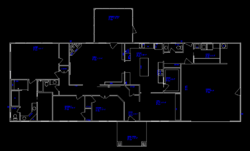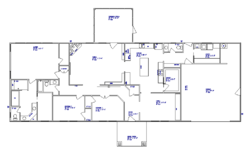Hello, all. My name is Jacob and I'm in the process of building a new home for my wife and I. We are the general contractors and majority laborers. We live in central Texas where the winters are mild, but they do still exist (especially for my wife who is cold-natured).
I'm not sure how many people are on here from Texas, but I figured you guys would have the best advice for me. We have always had fireplaces, but I'm tired of having something like that for the looks by themselves. My in-laws have a wood burning stove and I love how it actually heats the house. So, since I finally convinced my wife that it was the smarter choice, I'm now trying to figure out the details of which brand, size, etc.
So the details of the house are:
- 2400sqft
- Open-cell spray foam insulation (fully sealed home)
- 8ft ceilings throughout
- Stove location will be fairly centralized, in living room
This is what I'm currently looking at:
- Osburn 2000 (big enough?)
- Building corner alcove so we can have a wood mantle (requirement by wife)
- Not sure if I need piping for fresh air from outside
With these details, can anyone help me make the decision on which stove, how to best install it for efficiency, and anything else you might want to add?
Thanks everyone!
I'm not sure how many people are on here from Texas, but I figured you guys would have the best advice for me. We have always had fireplaces, but I'm tired of having something like that for the looks by themselves. My in-laws have a wood burning stove and I love how it actually heats the house. So, since I finally convinced my wife that it was the smarter choice, I'm now trying to figure out the details of which brand, size, etc.
So the details of the house are:
- 2400sqft
- Open-cell spray foam insulation (fully sealed home)
- 8ft ceilings throughout
- Stove location will be fairly centralized, in living room
This is what I'm currently looking at:
- Osburn 2000 (big enough?)
- Building corner alcove so we can have a wood mantle (requirement by wife)
- Not sure if I need piping for fresh air from outside
With these details, can anyone help me make the decision on which stove, how to best install it for efficiency, and anything else you might want to add?
Thanks everyone!





 . It was possibly a LEGENDARY post.
. It was possibly a LEGENDARY post.